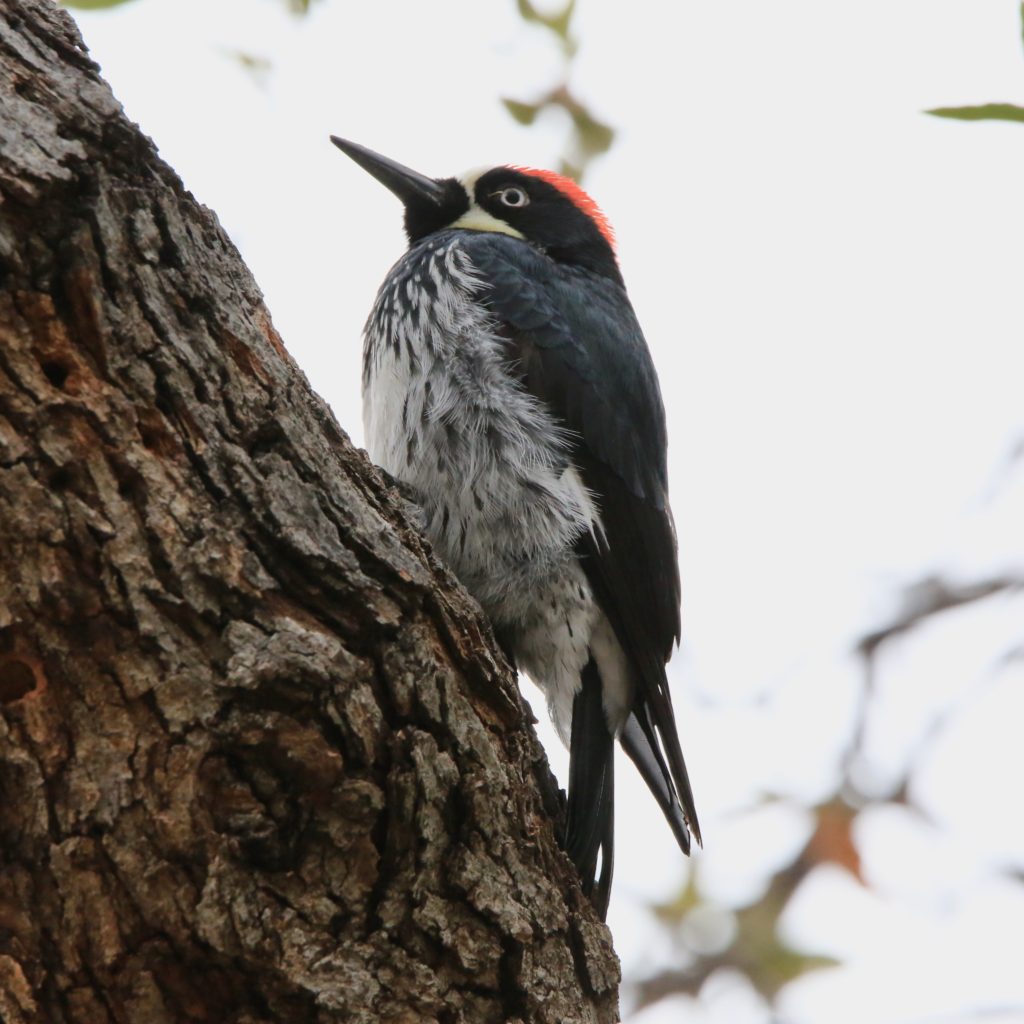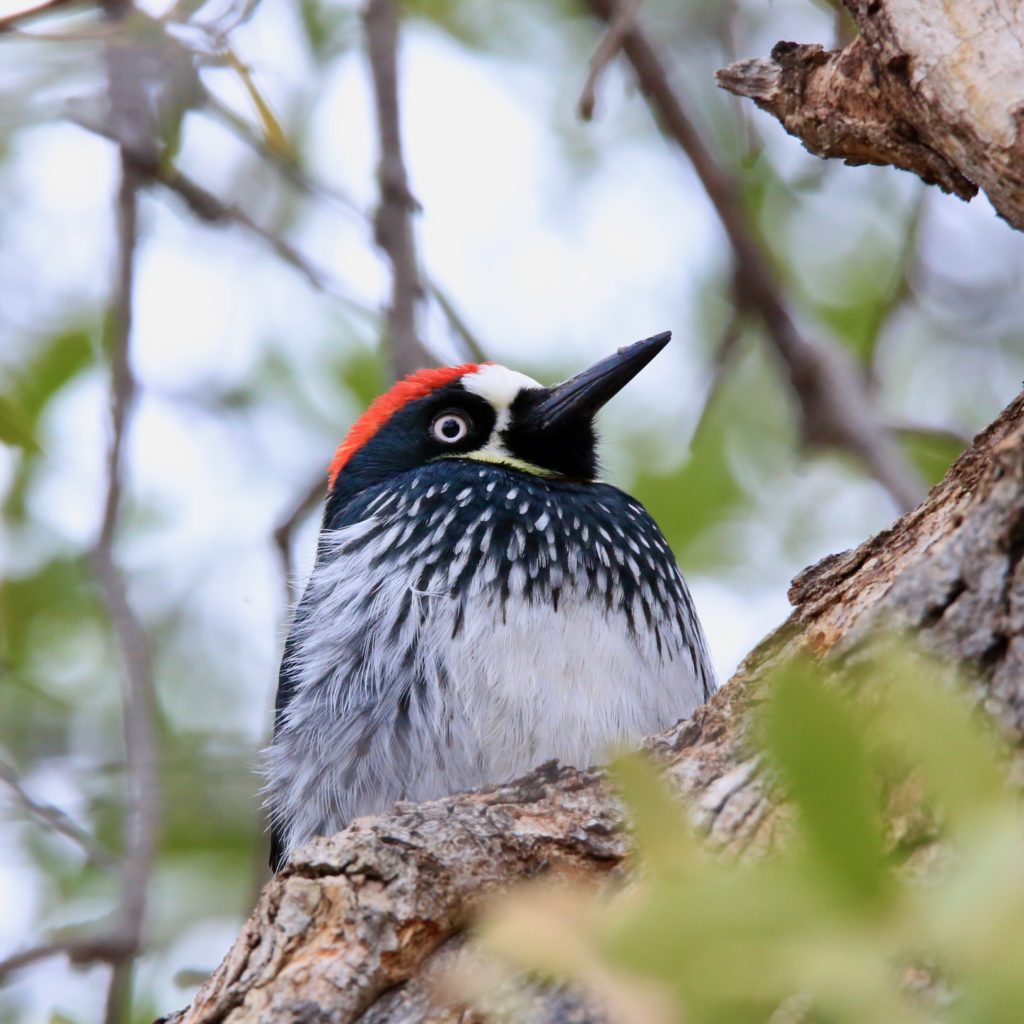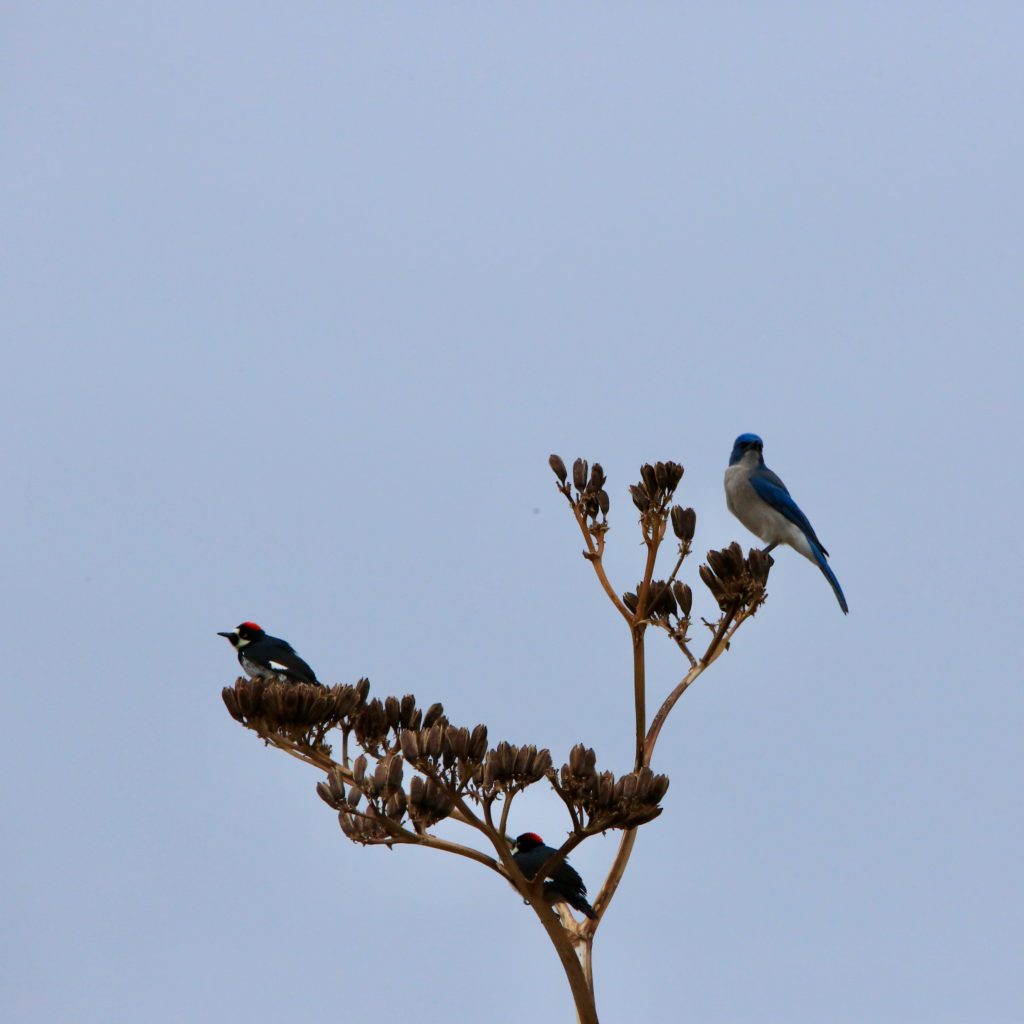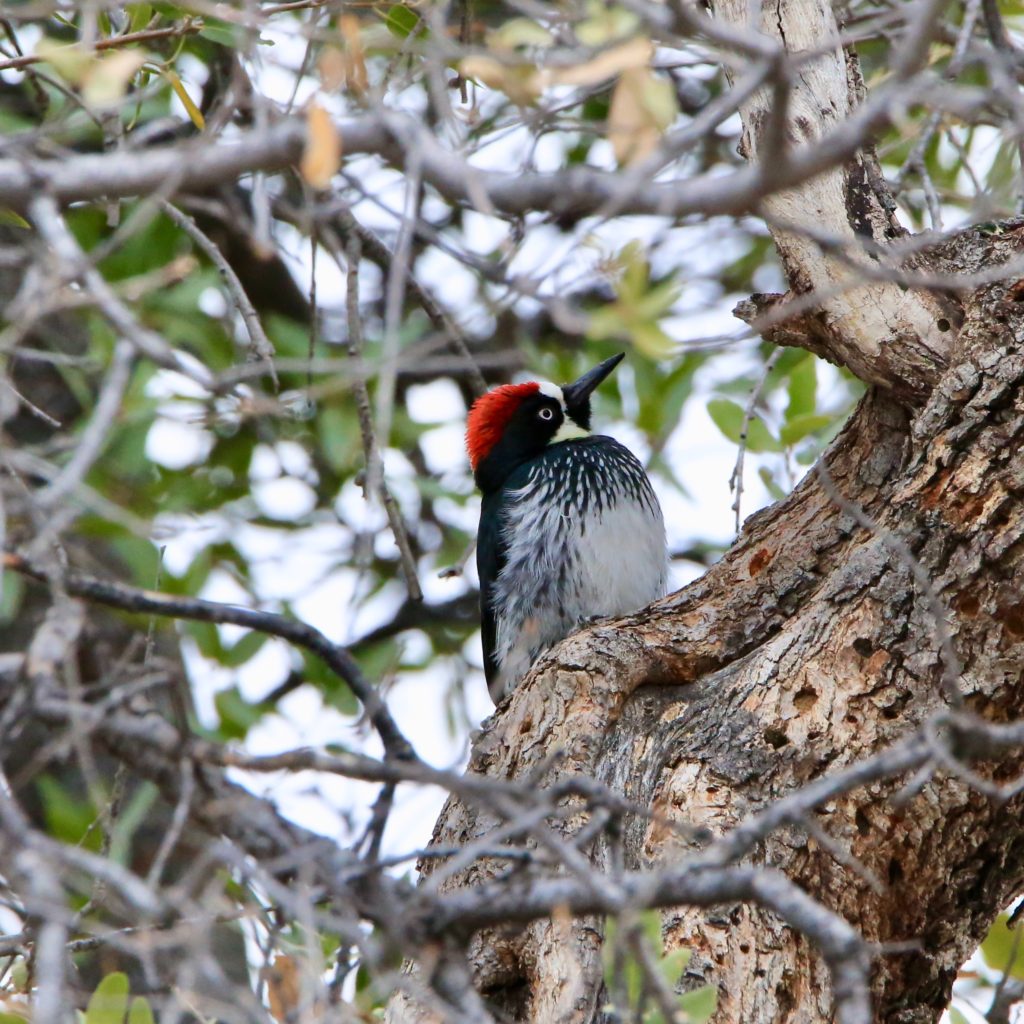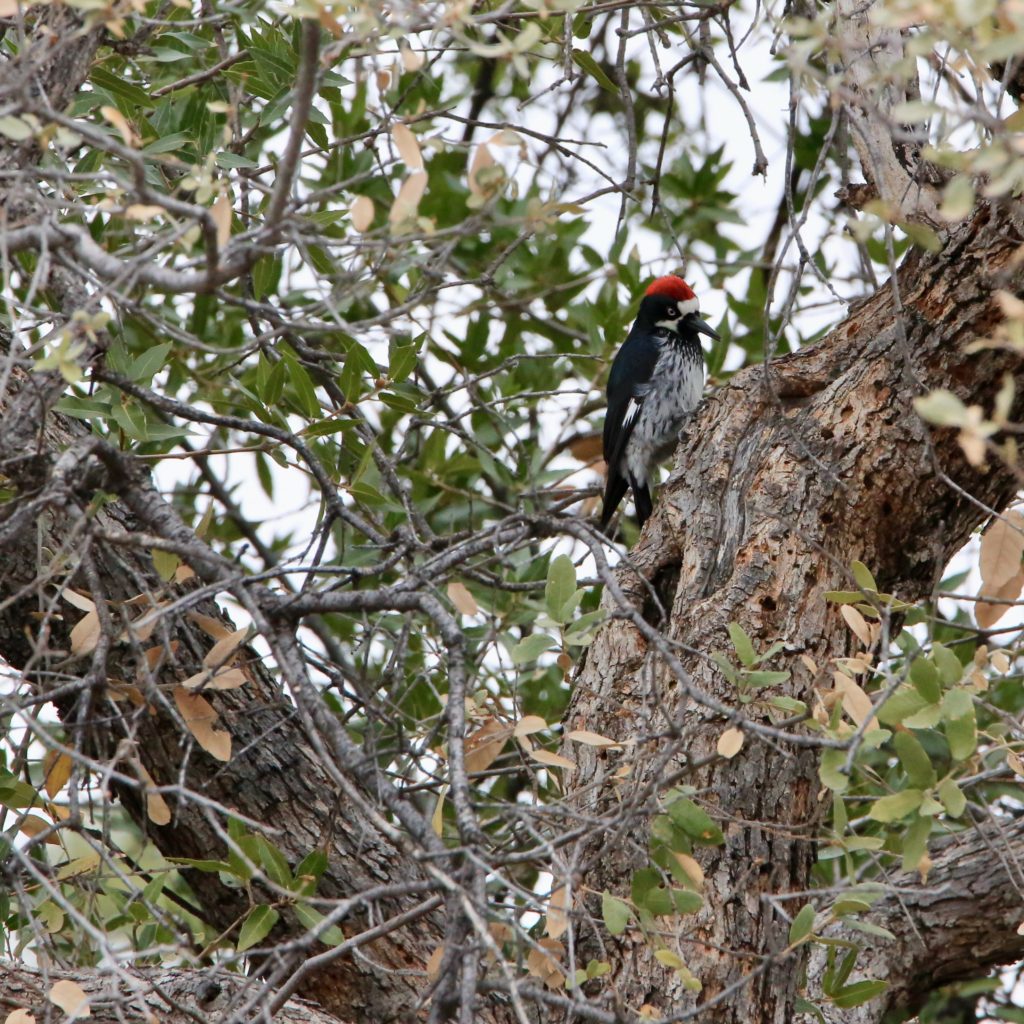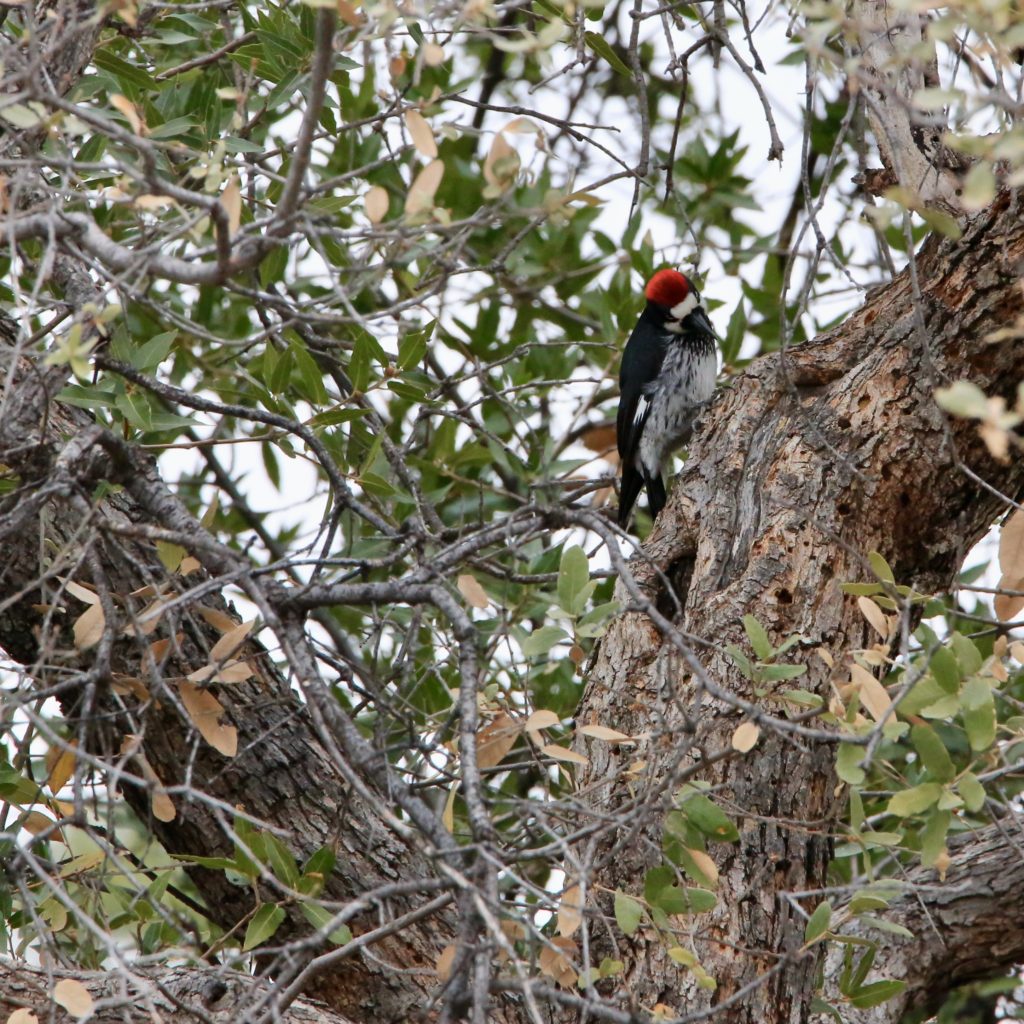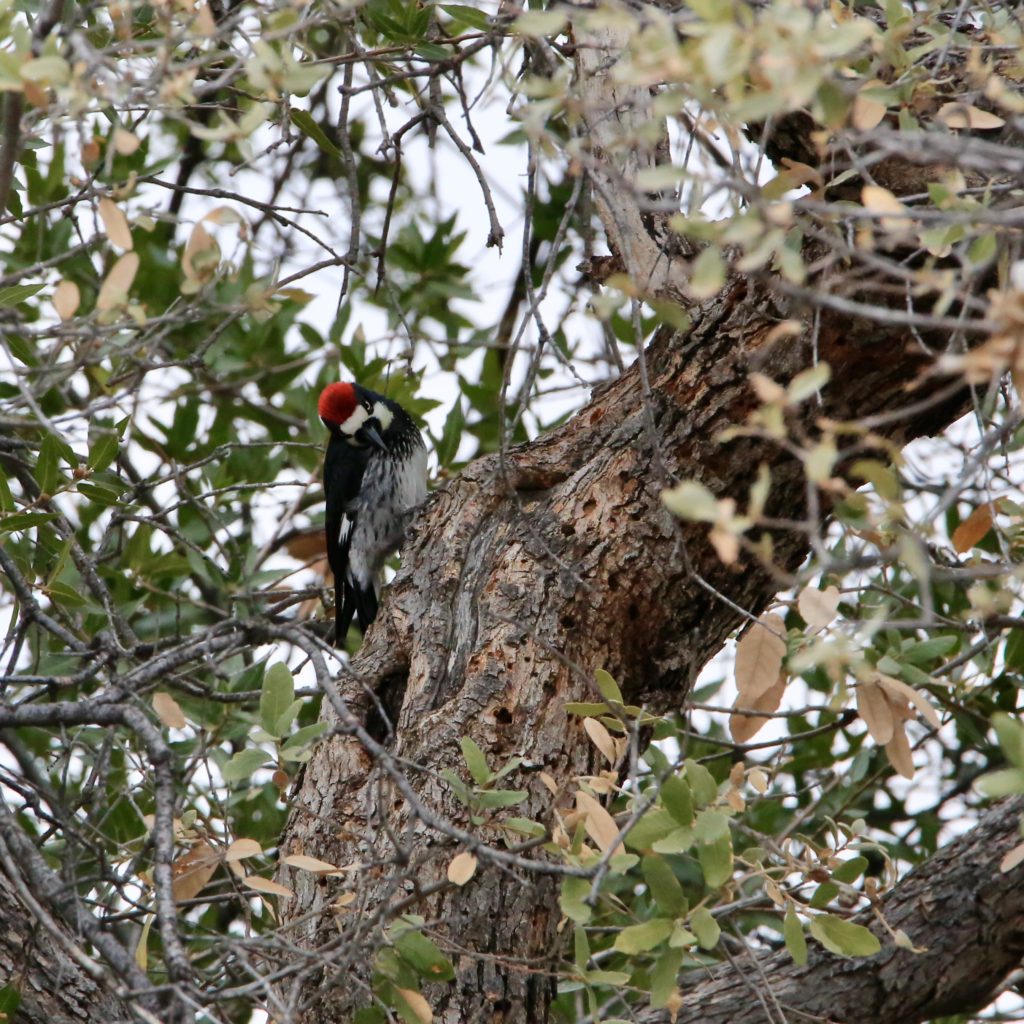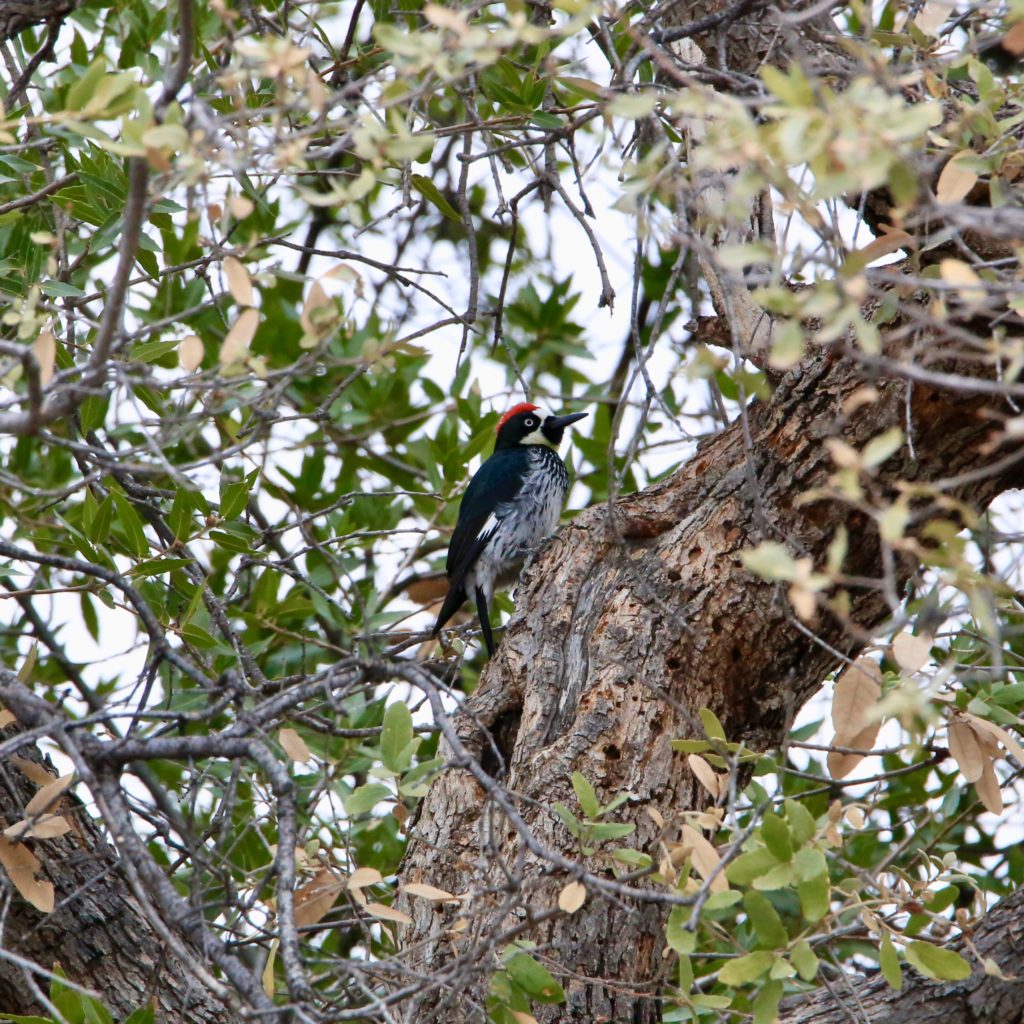
An Acorn Woodpecker is a fun bird to see while bird watching. Below are some tips to help you identify Acorn Woodpeckers. We have also put together a list of fun Acorn Woodpecker t-shirts, Acorn Woodpecker bird patches, birdhouses, bird feeders, binoculars, stickers, and other fun bird-watching items.
About Acorn Woodpeckers
The Acorn Woodpecker is a Woodpecker that has its habitat near and its oak forests. This bird relies on the storing of acorns to have a stable food supply all year round. These birds are not migratory and will stay in their area unless they need to move and find food. These birds have very fascinating social lives and their conservation status is doing well.
Description and Identification
These medium-sized Woodpeckers are between 7.5–9.1 inches long with a wingspan of 13.8–16.9 inches. Adults of this species have brownish-black heads with mostly black wings, backs, and tails. They have white foreheads that recede into a red cap for males while remaining black for females. These birds are marked by contrasting patches of white; they have white bellies, throats, and white circles on their wings. The small of the backs of both sexes have inconspicuous green feathers.
Acorn Woodpecker Color Pattern
Acorn Woodpeckers have black, red, and white feathers. Due to the very white eyes that Acorn woodpeckers have, they are often referred to as being clown-faced. Male and female Woodpeckers look very similar. One of the slight differences is that the red cap is generally just on the back of the female’s head while it covers most of the male’s.
Acorn Woodpecker Size
The Acorn Woodpecker is a medium-sized Woodpecker approximately 21 cm.
Acorn Woodpecker Behavior
The behavior of the Acorn Woodpecker is that of a regular wood peck, drilling holes into trees to create storage holes.
Acorn Woodpecker Food
Their main dietary consumption involves acorns and insects. The acorns are harvested directly from oak trees and stored in drilled holes in storage trees. They also harvest and store other nuts like almonds, walnuts, hazelnuts, pecans, and pinyon pine nuts. These holes are drilled during the winter to prevent foot shortages among colonies and are only drilled on dead bark strips so as to not damage the living tree. The nuts are also routinely transferred into new holes when the old ones become loose. This pattern of storing food has led ornithologists to label these storages as granaries. They are reused every winter with new holes added to them with time. The storage capacity is enormous and can have more than 50,000 nuts stored in them. Other common storage locations include utility poles, fenceposts, and wood-sided buildings. Despite their namesake, Acorn Woodpeckers also hunt for insects like ants, beetles, and other flying insects all year round. These insects are often stored in cracks or crevices separate from the nuts. Other resources include fruit, sap, oak catkins, flower nectar, grass seeds, lizards, and sometimes eggs of their own species.
Around half of this Woodpecker’s diet consists of acorns. These acorns are stored in large communities holes dug in trees and other objects. The other half of the diet includes insects, nuts, fruits, seeds, and the occasional egg from another bird.
Acorn Woodpecker Habitat
These birds are year-long residents in oak and pine-oak woodland areas. Areas in proximity to such woodlands are also known to support their populations, including streamside forests, Douglas-fir forests, redwood forests, and tropical hardwood forests. In urban areas, they opt for parks, groves, and suburban areas. They generally occur along low elevations but are rarely found below 3,300 feet.
Range and Migration

Acorn Woodpeckers are clown-faced birds known for their habit of hoarding acorns and their complicated social structures. These curious birds are permanent residents of forested areas with oaks in the coastal areas and foothills of Oregon, California, and the areas from the southwestern United States until Central America and northern South America. The holes created by these birds are frequently spotted in urban areas along with suburban parks.
Acorn Woodpecker’s Lifecycle
The life span of the Acorn Woodpecker is 9.5 to 16 years.
Nesting
Acorn Woodpeckers have a variety of breeding patterns, ranging from monogamous pairs to breeding collectives. These breeding collectives are called coalitions and they involve multiple adults nesting together and localizing on storage granaries. Adult offspring also volunteer to stay at parent nests and raise the subsequent generations of Woodpeckers. This unique behavior of more than two adults raising a brood is only found in less than 9% of the total bird species on the planet. The presence of the localized granaries and the social cooperation between the birds form a symbiotic relationship with each other. Eggs usually have more than one paternity and are found in excavated cavities in the side of large trees either on the trees hosting the storage granaries or on other large trees close by. Nests are usually not built, with birds only picking away at old bark chips as new layers of bark form with time. The breeding season usually involved 1–2 broods with 3–6 eggs in each clutch.
Ornithology
Bird Watching Academy & Camp Subscription Boxes
At the Bird Watching Academy & Camp we help kids, youth, and adults get excited and involved in bird watching. We have several monthly subscription boxes that you can subscribe to. Our monthly subscription boxes help kids, youth, and adults learn about birds, bird watching, and bird conservation.
Bird Watching Binoculars for Identifying Acorn Woodpeckers
The most common types of bird watching binoculars for viewing Acorn Woodpeckers are 8×21 binoculars and 10×42 binoculars. Bird Watching Academy & Camp sells really nice 8×21 binoculars and 10×42 binoculars. You can view and purchase them here.
Acorn Woodpecker T-shirts
If you love the Acorn Woodpecker you should purchase a Bird Watching Academy & Camp T-shirt. To help support bird conservation we donate 10 percent to bird conservation activities.
Acorn Woodpecker Iron On Patches
Kids, Youth, and Adults love to collect our Bird Watching Academy & Camp iron-on patches. Our bird-watching patches help you keep track of the birds you have seen and identified. You can also display the patches on our Bird Watching Academy & Camp banners.
The Acorn Woodpecker is a great iron-on patch to start your collection with. The patches are durable and can be sewn on or ironed on to just about anything.
- Acorn Woodpecker Iron on Patches$2.99
- Bird Banner$10.99
Acorn Woodpecker Stickers
Stickers are a great way for you to display your love for bird watching and the Acorn Woodpecker. We sell a monthly subscription sticker pack. The sticker packs have 12 bird stickers. These sticker packs will help your kids learn new birds every month.
Bird Feeders for Acorn Woodpeckers
There are many types of bird feeders. Here are our favorite bird feeders for your backyard. We use all of these bird feeders currently. Kids will have a great time watching birds eat at these bird feeders. Using this collection of bird feeders will provide a wide variety and many types of birds.
Best Bird Houses for Acorn Woodpeckers
There are many types of bird houses. Building a bird house is always fun but can be frustrating. These 4 bird houses have become our favorites. Getting a bird house for kids to watch birds grow is always fun. We spent a little extra money on these bird houses but they have been worth the higher price and look great.


